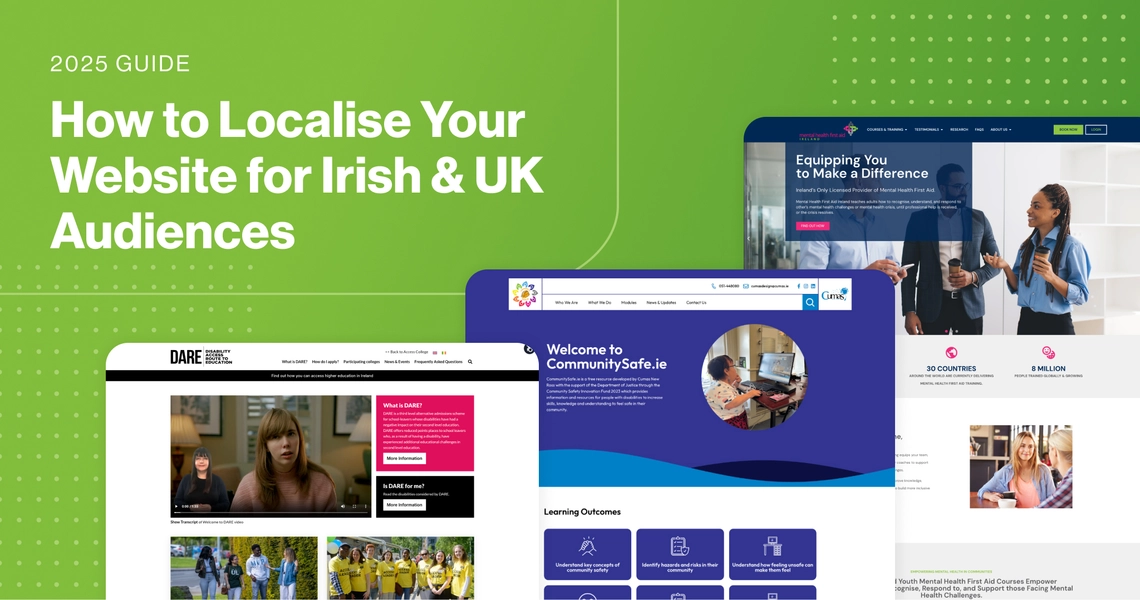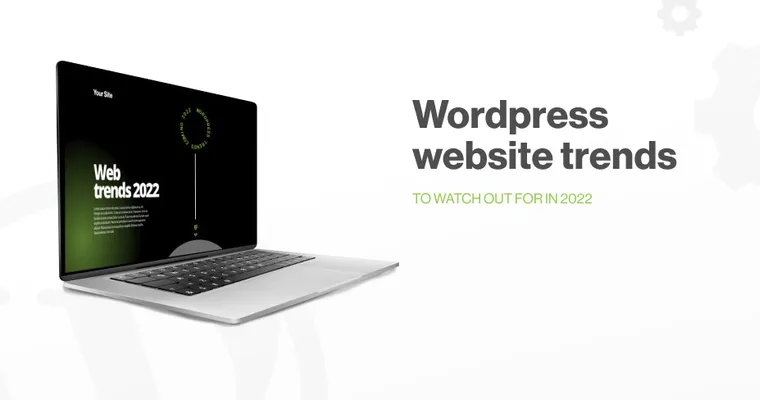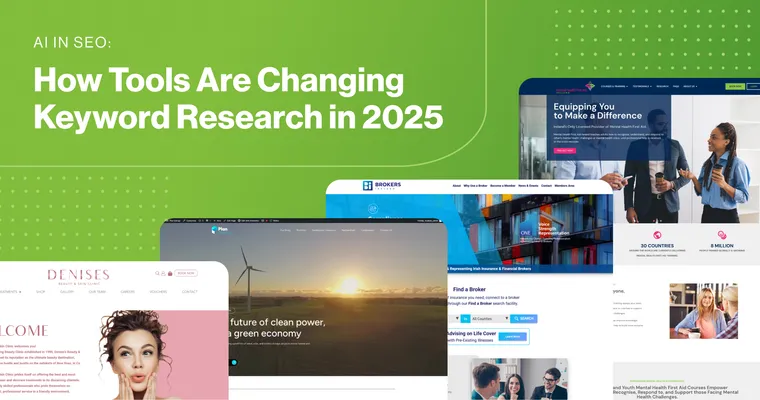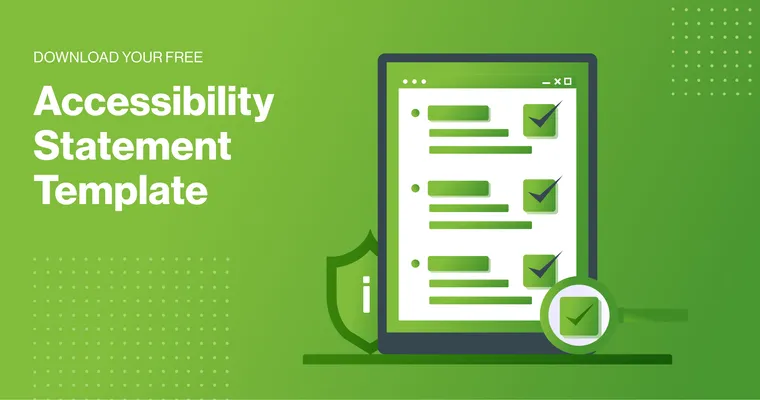Summary
Localising your website for Irish and UK audiences goes beyond changing currency or spelling. It’s about creating a seamless, trustworthy, and relevant user experience that connects with both markets while meeting regulatory requirements. In this guide, we’ll show you how to adapt your site for both audiences from language and culture to SEO and GDPR compliance so you can boost engagement, conversions, and search visibility.
Why Website Localisation Matters
For Irish and UK businesses, having a single website serve both regions can be efficient – but only if it feels local to each audience. A well-localised site:
- Builds trust by reflecting regional nuances.
- Improves SEO through localised content and search intent.
- Enhances user experience with familiar currency, tone, and regulations.
- Increases conversion rates by reducing confusion or friction.
- Understanding Localisation vs. Translation
Localisation is not just translation.
- Translation = converting words from one language to another.
- Localisation = adapting design, content, and functionality for cultural and regional context.
For Ireland and the UK, the same language is spoken – but differences exist in:
- Spelling (e.g., “organisation” vs “organization”)
- Phrasing (“holiday” vs “vacation”)
- Tone (more formal in the UK, conversational in Ireland)
- Cultural references and local terminology
- Currency and Pricing
Price clarity builds trust – especially for online stores.
Best practices:
- Display both EUR (€) and GBP (£) where relevant.
- Use automatic geolocation to show local currency, with an easy manual switcher.
- Make sure Shopify Payments or your payment gateway supports multi-currency.
- Consider local taxes and shipping rules when showing totals.
Pro tip: Avoid forcing users into one currency; transparency keeps both markets happy.
- Legal & GDPR Compliance
Post-Brexit, UK GDPR and EU GDPR differ slightly – meaning your site must respect both.
For Ireland (EU GDPR):
- Data controllers must follow EU data transfer and consent rules.
- Cookie banners must provide opt-in controls.
For the UK:
- Separate privacy notices for UK users may be required.
- Data transfers between EU and UK entities must have appropriate safeguards.
Checklist:
- Update Privacy Policy and Cookie Policy to mention both regulations.
- Use region-specific consent management tools (like Cookiebot or OneTrust).
- SEO and Search Localisation
Search engines want to show users the most relevant local results.
To appear in both Irish and UK searches:
Technical SEO Tips:
- Implement hreflang tags for “en-IE” (Ireland) and “en-GB” (UK).
- Create region-specific pages (e.g., /ie/ and /uk/ versions).
- Use local backlinks – Irish directories for .ie sites, UK ones for .co.uk.
Content SEO Tips:
- Research local keywords: “web design Dublin” vs “website design London.”
- Adjust meta descriptions to reflect each region’s search terms.
- Add location-specific case studies or testimonials.
- Cultural Design Cues
Small cultural cues can make or break trust.
Visual & content differences to consider:
- Imagery: use relatable locations (e.g., Dublin skyline vs. London landmarks).
- Colours & symbols: avoid clichés or political connotations.
- Holidays & campaigns: adapt for St. Patrick’s Day, Easter, Black Friday, etc.
- Social proof: highlight client logos and reviews relevant to each region.
Tip: Create two homepage hero sections tailored to each region, swapping them via geolocation.
- Payment, Shipping & Contact Details
Regional trust often hinges on how easy it is to reach you.
Checklist:
- Show Irish and UK contact options (e.g., local phone numbers or addresses).
- Offer region-specific shipping and delivery information.
- Use trusted payment logos (Visa, Mastercard, Revolut, etc.).
- Tools & Plugins for Localisation
Some helpful tools for multi-region sites:
- Weglot – translation/localisation automation.
- Langify – multilingual Shopify app.
- GeoIP Detection – WordPress plugin for region-based content.
- Shopify Markets – manage pricing, taxes, and languages in one place.
- Maintaining Consistency
Keep branding consistent while allowing flexibility.
- Use one brand voice, with slight regional tone variations.
- Keep design and layout identical to simplify management.
- Use centralised CMS controls for easy updates across regions.
Summary:
To successfully localise your website for both Ireland and the UK:
- Adapt language, tone, and spelling subtly for each market.
- Display region-specific currencies and legal notices.
- Use hreflang and SEO best practices to appear in local search results.
- Align imagery and marketing with each audience’s culture.
- Test, monitor, and adjust continuously.
Done right, localisation makes your website feel “homegrown” to every visitor – no matter where they’re browsing from.
If you’re ready to make your website truly local for Irish and UK visitors, the 2Cubed team can help with tailored design, SEO, and compliance solutions. Contact us today to get started.
FAQs
Q1. What’s the difference between localisation and translation?
Localisation adapts your content for cultural and regional relevance, while translation only changes the language.
Q2. Do I need separate websites for Ireland and the UK?
Not necessarily. A single website with proper localisation (currency, hreflang, regional policies) can effectively serve both.
Q3. How do I manage currencies efficiently?
Use tools like Shopify Markets or multi-currency plugins that automatically adjust based on user location.
Q4. What’s the best way to stay GDPR-compliant for both regions?
Have clear privacy notices for EU and UK users, and use a consent management system that distinguishes both.
Q5. Can localisation improve my SEO?
Yes – search engines reward locally relevant content, boosting visibility in both Irish and UK searches.



